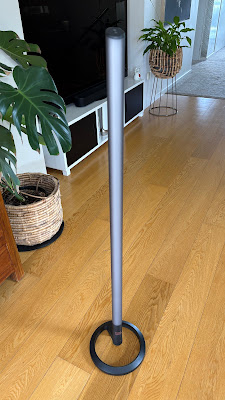At the risk of sounding a bit grinchy, this time of year is when you're at greatest risk of online crime. Every online shopping transaction is an opportunity for bad actors to finagle their way into your cyber affairs, potentially swooping in to grab your personal details, security codes, bank logins and credit card information.
It's already a stressful time for many people and the last thing you need is discover some lowlife has snuck in and drained your account.
Or even worse, discovering someone close to you - perhaps an elderly or vulnerable relative - hasn't quite got the digital literacy to look out for suspicious activity online. In these cases, their stress can become your stress pretty quickly.
Now Norton has come up with a way to take some of that holiday stress away.
Financial Monitoring is a new feature under the Identity Protection section of any Norton 360 Platinum or Norton 360 Advanced subscription.
Once you're subscribed, you'll find the Financial Monitoring tab in the Identity Protection section. Here you can link to your bank accounts, credit cards, investments and loans.
Ironically, I found the setup process kind of scary. Although I knew (and double-checked) I had logged in to my account via the official Norton website, these days I'm always pretty reluctant to input sensitive information like bank logins. You can bet I was keeping a close eye on my accounts on another screen just to make sure this wasn't some kind of extremely elaborate scam.I'm not sure how Norton could get around this nervousness - how the process of linking to your most critical financial details could feel safer.
However, in the interests of exploring the experience on your behalf, Dear Reader, I took the plunge and carried on.
All major New Zealand banks and lending institutions seemed to be represented and I had no issue completing the process.
Once I had, I could then access a summary of my account activity from any device I had installed Norton 360 Advanced onto. Although this part of proceedings isn't that different from logging onto a specific banking app, if you have multiple dealings with a collection of different financial institutions, this is certainly a great way to see all the comings and goings at a glance.
But the real peace of mind comes from the notifications Norton sends out if it detects any unusual activity.
I'm no big-noter so it's not every day I go out and make multi-hundred dollar purchases. While you can set the threshold for an "unusual transaction" wherever you want, I decided to go for the lowest possible option, $100 for cash withdrawals, purchases and transfers.
Sure enough, when I spent an eye-watering amount at the supermarket yesterday, doing a pre-Christmas shop, I was notified shortly after about my suspicious purchase. At this point you can choose to ignore it or follow up if you don't recognise the transaction.
And just like that I suddenly had the confidence to shop online without being quite so paranoid. Given the angry, shouting woman at the self-service checkout next to me at the supermarket, it might be time to give online grocery shopping a go.
The downside is there's a bit of a delay between the transaction and the notification - but I assume that's actually the delay between me making the purchase and the digital funds literally changing hands. We've all seen how that process can sometimes take days for no explicable reason.
So taking that into account (excuse the pun) I'm now pretty optimistic Norton's Financial Monitoring service will be able to alert me to anything weird before I wake up one morning to discover I'm now a another penniless victim of online fraud. That certainly wouldn't be ideal Christmas morning - or any other morning for that matter.
It's also potentially a fantastic way to prevent the people close to you - be they elderly or just starting out - making a naïve mistake that could cost hundreds, if not thousands.
I've trusted Norton to protect my devices and my identity for years and it hasn't let me down yet. Now it's nice to know Norton is standing outside my virtual bank vault for extra security as well.















-8.JPG)
-11.JPG)
-7.JPG)
-13.JPG)
-12.JPG)
-9.JPG)






















